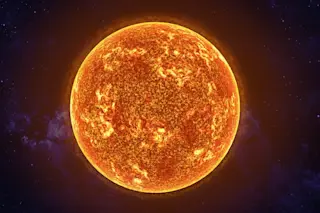Pulsars, the dense spinning remnants of exploded stars, contain about the same mass as the sun crushed into a wad of neutrons less than 10 miles wide. These stellar nuggets spin as much as several hundred times a second, a spin that astronomers have believed was inherited from the rotating core of the pulsar's exploded parent star. Recently, however, two astrophysicists proposed that the conventional explanation for what makes pulsars spin is probably wrong.
Henk Spruit, of the Max Planck Institute for Astrophysics in Garching, Germany, and Sterl Phinney at Caltech had been studying the rotation of giant stars. "During the evolution of a star about to go supernova, the outer part of the star expands out to about 100 times the radius of the sun, and the inner part that's going to make the pulsar shrinks to less than 1,000 miles across," Phinney says. And like a spinning skater ...














